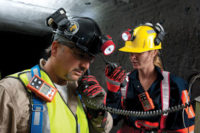These findings are especially important to leaders of capital projects (new construction, maintenance or up-grades). By nature, these projects are complex and fast moving. A petroleum industry project, for example, typically follows a multi-phased life cycle supported by several engineering, procurement and construction (EPC) contractors. Projects present meaningfully different safety challenges than those in a more stable operating business unit, such as a refinery. Different phases of a project typically introduce new processes and people. Exposures can change as the project progresses. More often than not, a project means having a culture that is “starting from a clean sheet of paper.” Add to this that most HSE processes and procedures available to team leaders are rooted in operating unit experience, and you can see why so many project teams struggle to apply safety practices effectively.
This does not mean that project environments must accept lesser standards of safety — or allow their employees to be exposed to a greater risk of a serious or fatal injury. It simply means that project teams must develop the same dexterity of thought and leadership in safety as they do in project and process management. The key is focusing on high-impact actions that can be executed at all levels of leadership.
Building a “zero-tolerance” culture
Every workplace has a discernible way that things are done. Despite what is documented in the contract, policy manuals, and safety program materials, workers quickly learn what that “way” is — and what is truly important — by watching how the project management team behaves. Culture, or “how we do things here,” influences how people interpret directives and initiatives, how they navigate situations that lack clearly defined rules and procedures, and even how they interact.
To begin building a culture that supports a zero tolerance of fatal risks, a project management team needs to define behaviors that address the causes of serious and fatal injuries. And they need to commit to engaging in those behaviors personally. We sometimes call these the “critical leadership behaviors” for the project. The most successful teams cascade a set of level- or role-specific critical leadership behaviors from the project manager down through first-level supervision. This is a short list of high-impact actions that address high-potential exposures. Typically, the list is limited to fewer than ten behaviors. Here are five of the most effective:
1 Approach others.
Having the skill and confidence to engage in high-quality safety contacts is foundational to effective project leadership. These contacts may occur in the context of a formal safety “walk about,” however they often best occur spontaneously in the course of your normal daily activities. You should be able to have a conversation in which you ask the questions appropriate to the situation, such as: Were you aware you were at risk? How can you do this differently? Will you try to do that next time?
2 Apply life-saving rules.
Life-saving rules (sometimes called cardinal rules) directly address a subset of precursors to serious and fatal injuries. To be credible, however, these rules must be specific to the project and relevant to the work being done. To be actionable, the project management team must be consistent in explaining, enforcing, and applying discipline related to these rules, developing a contextual view of violations. For example, when a rule is broken, are you asking not just about whether the worker’s behavior was enabled physically, but also whether it was supported by management systems and culture?
3. Support pre-task risk assessments.
An effective pre-task risk assessment encourages workers to step back momentarily whenever they see changes in exposure, allowing them to pause work and formulate a new plan. Leaders need to establish, require compliance with, and review the effectiveness of procedures to promote pre-task risk assessments. This needs to be done to assure that there is adequate control of hazards and that supervisors and workers understand the risks and controls. The responsibility for this activity needs to be clearly defined and documented, established collaboratively across contractor companies, functions and levels, and done in a way that encourages open and complete discussion about high-potential exposures.
4. Foster incident reporting.
Getting sufficient data for reducing high-severity risk requires an environment where it is safe to report all incidents. Specifically, as a leader you must develop the ability to react predictably and positively to reported events, literally learning what to say and what not to say the moment you first hear about an incident. Depending on the maturity of the reporting system, focusing your attention on recognizing and providing positive feedback to workers who report near misses, especially with high potential, can be extremely helpful in the early days of project execution.
5. Remove blind spots.
It’s common to confuse good injury rates (such as TRIR) with good safety performance overall — creating a blind spot to high-severity exposures. Leading organizations counter this effect with formal systems that track what they call “high-potential rate,” which they use to focus mitigation activities. At the individual level, effective safety leaders help others “see” high-severity potential by challenging their direct reports to examine what may look routine. For example, one helpful thing you can ask is: If someone were going to get seriously injured or killed doing this job today, how could it happen and what are we doing about it?
Applying best practices
The five practices here provide a good starting point for eliminating the life-altering incidents that still occur all too often in the project environment — and across industry generally. However, different working environments, even within the same sector, will require different approaches to addressing serious and fatal injuries. One size does not fit all. What’s important is first understanding the unique nature of high-severity events and then adapting those principles to exposure reduction in your own systems and processes.


